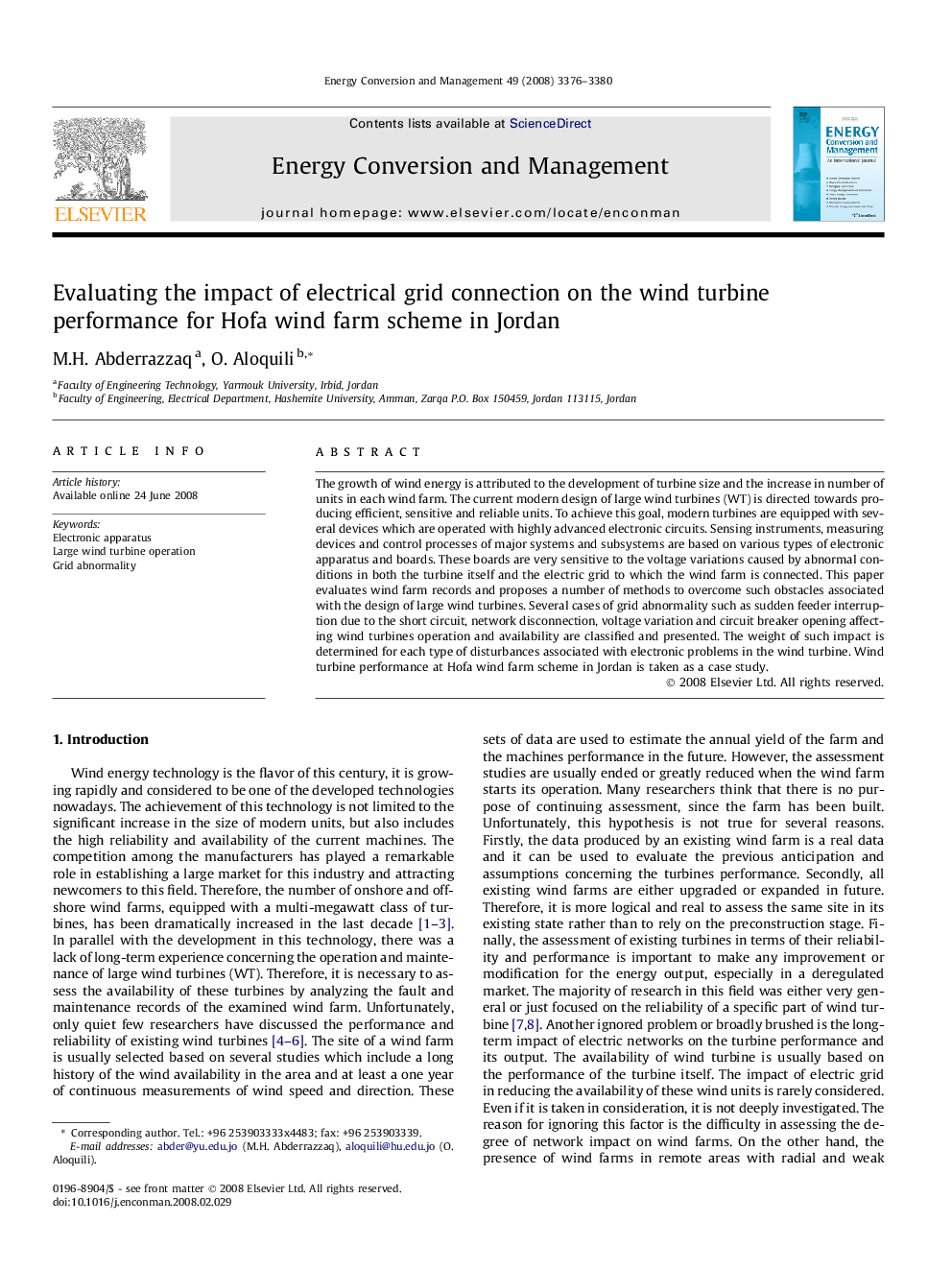| Article ID | Journal | Published Year | Pages | File Type |
|---|---|---|---|---|
| 766485 | Energy Conversion and Management | 2008 | 5 Pages |
The growth of wind energy is attributed to the development of turbine size and the increase in number of units in each wind farm. The current modern design of large wind turbines (WT) is directed towards producing efficient, sensitive and reliable units. To achieve this goal, modern turbines are equipped with several devices which are operated with highly advanced electronic circuits. Sensing instruments, measuring devices and control processes of major systems and subsystems are based on various types of electronic apparatus and boards. These boards are very sensitive to the voltage variations caused by abnormal conditions in both the turbine itself and the electric grid to which the wind farm is connected. This paper evaluates wind farm records and proposes a number of methods to overcome such obstacles associated with the design of large wind turbines. Several cases of grid abnormality such as sudden feeder interruption due to the short circuit, network disconnection, voltage variation and circuit breaker opening affecting wind turbines operation and availability are classified and presented. The weight of such impact is determined for each type of disturbances associated with electronic problems in the wind turbine. Wind turbine performance at Hofa wind farm scheme in Jordan is taken as a case study.
